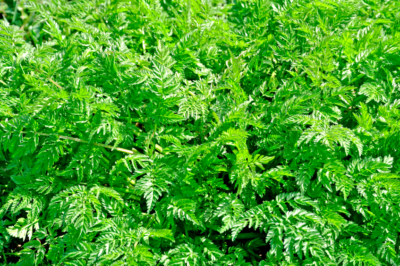The chervil – compared to other kitchen herbs, it grows quickly. Throughout the summer and until the fall accumulate yields that can not be used all at once. Therefore, it is worth freezing the chervil.

Contents
The advantage over drying
In no time the chervil has reached a good size and can be harvested. If you dry it, you will notice when you use it later that the herb has lost a lot of its aroma. The essential oils volatilize during the drying process. Therefore, it is advisable to freeze the chervil to preserve it and use it throughout the winter.
The correct timing and procedure for harvesting
Chervil should generally be harvested – similar to other herbs – before the onset of its flowering. Once the flowers have emerged, the leaves lose flavor and become bitter as chervil invests its energy in its flowers.
It is ideal to harvest chervil in the morning or evening and never at midday in midsummer. To do this, cut off as many shoots at their lower stem end with scissors.
And after that: clean, cut, freeze.
After cutting the chervil is cleaned of mud and dirt best under running water. After that, the remaining water should be allowed to drip off. Now take a board and chop the chervil with a sharp knife or a cradle knife.
After that, put the chopped chervil in a freezer bag or a sealable can and store it in the freezer. When frozen, it will keep for a long time. Herbs do not lose flavor in this process unlike protein-rich foods like fish and meat.
What can you do with the chervil later?
It is best to use chervil while it is still frozen. It should be added to the food or sprinkled over it just before serving. It is suitable among others for:
- Soups and stews (e.g. chervil soup)
- dressings and tartar sauce
- Roast lamb
- Fish dishes
- Scrambled eggs
- Omlettes
- Stewed tomatoes
Tips & Tricks
The first harvest can be obtained no earlier than four weeks after sowing or planting, if the chervil grows in a suitable location.

